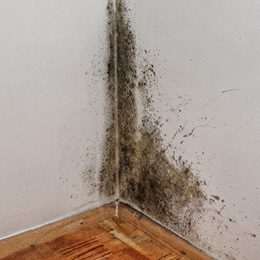
We take all reports of damp and mould seriously
We want you to feel safe and comfortable in your home.
Left untreated, damp and mould can cause problems with the structure of your home and have a negative effect on health.
This page explains what we will do if you report a problem with damp and mould.
What to do if you see damp or mould in your home
1. Report it to us as soon as possible
You can report repairs through the following channels:
Phone: 01543 462621 (urgent/emergency repairs)
Email: dampmouldanddisrepair@cannockchasedc.gov.uk
Online: Via the Repairs Online Service
In Person: At the Civic Centre, Beecroft Road, Cannock
Letter: Sent to Housing Maintenance at the Civic Centre
2. A member of our team will contact you to find out more about the problem.
3. Our specially trained officers will investigate any potential damp and mould hazards, to identify the cause and eliminate the problem.
4. Some causes are not always easy to identify, we will continue to work with you to resolve the issues, providing guidance where necessary.
5. We will continue to work with you to ensure your damp and mould issues have been resolved.
- Awaab's Law
-
Awaab’s Law comes into effect from 27 October 2025, which places legally binding duties on councils to address serious damp and mould hazards in homes, within strict timeframes.
The Council is preparing to ensure full compliance for all its social housing stock with a dedicated team to work with tenants to address damp, mould and condensation issues in council housing.
Named in memory of Awaab Ishak, a two-year-old who tragically died in 2020 following long exposure to mould in his home, Awaab’s Law aims to guarantee that no tenant lives in hazardous conditions without prompt solution.
Councillor Sue Thornley, Portfolio Leader for Housing and Corporate Assets, said: “We take all reports of damp and mould very seriously. Everyone deserves to feel safe and comfortable in their home, and we understand the impact these problems can have on people’s health.
“The new timeframes set by Awaab’s Law are challenging, but they are necessary. We’re working hard to make sure our teams are ready to meet these standards consistently, delivering a prompt, fair and professional service for our tenants.”
Tenants are encouraged to report any damp, mould, or condensation issues as soon as they arise. Reports can be made by phone, email, online, or in person (see above section).
More information on Awaab's Law is available for tenants here: Awaab’s Law: Guidance for tenants in social housing - GOV.UK
- How to identify damp, mould and condensation in your home
-
Download our leaflet here: Damp, mould and condensation leaflet
- FAQ's
-
What is damp and mould?
Damp: Excess moisture in a property, caused by condensation, leaks, or water ingress.
Mould: A type of fungi that grows in damp, poorly ventilated areas, feeding on moisture and organic matter.
How to identify damp and mould?
Smell: A damp, musty odour.
Appearance: Dark, discoloured patches on walls, floors, or ceilings; lifting or peeling wallpaper; visible mould spots.
Feel: Walls, floors, or ceilings may feel cold or damp to the touch.
What causes damp and mould?
Excess Moisture: From everyday activities like showering, cooking, and drying clothes.
Poor Ventilation: Lack of fresh air and air circulation in rooms, especially kitchens and bathrooms.
Leaks & Water Ingress: Problems with the roof, windows, or internal pipes allowing water to enter the property.
Condensation: When warm, moist air comes into contact with cold surfaces, such as windows, walls, and behind furniture.
How do I reduce moisture and prevent damp and mould
Ventilate: Use extractor fans in kitchens and bathrooms, and open windows to let air circulate.
Reduce Moisture: Cook with pan lids on, use minimum water for cooking, and dry clothes outdoors or in a well-ventilated room.
Maintain Temperature: Keep your home warm, as a cold home creates more condensation.
Air Circulation - Allow space for air to circulate around furniture on external walls.
Use Dehumidifiers: If you can't open a window, a dehumidifier can help control moisture levels.
